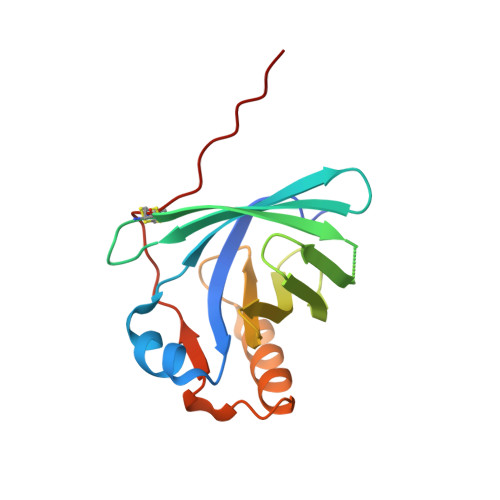Galline Ex-FABP Is an Antibacterial Siderocalin and a Lysophosphatidic Acid Sensor Functioning through Dual Ligand Specificities.
Correnti, C., Clifton, M.C., Abergel, R.J., Allred, B., Hoette, T.M., Ruiz, M., Cancedda, R., Raymond, K.N., Descalzi, F., Strong, R.K.(2011) Structure 19: 1796-1806
- PubMed: 22153502
- DOI: https://doi.org/10.1016/j.str.2011.09.019
- Primary Citation of Related Structures:
3SAO - PubMed Abstract:
Galline Ex-FABP was identified as another candidate antibacterial, catecholate siderophore binding lipocalin (siderocalin) based on structural parallels with the family archetype, mammalian Siderocalin. Binding assays show that Ex-FABP retains iron in a siderophore-dependent manner in both hypertrophic and dedifferentiated chondrocytes, where Ex-FABP expression is induced after treatment with proinflammatory agents, and specifically binds ferric complexes of enterobactin, parabactin, bacillibactin and, unexpectedly, monoglucosylated enterobactin, which does not bind to Siderocalin. Growth arrest assays functionally confirm the bacteriostatic effect of Ex-FABP in vitro under iron-limiting conditions. The 1.8 Å crystal structure of Ex-FABP explains the expanded specificity, but also surprisingly reveals an extended, multi-chambered cavity extending through the protein and encompassing two separate ligand specificities, one for bacterial siderophores (as in Siderocalin) at one end and one specifically binding copurified lysophosphatidic acid, a potent cell signaling molecule, at the other end, suggesting Ex-FABP employs dual functionalities to explain its diverse endogenous activities.
Organizational Affiliation:
Division of Basic Sciences, Fred Hutchinson Cancer Research Center, Seattle, WA 98109, USA.


















